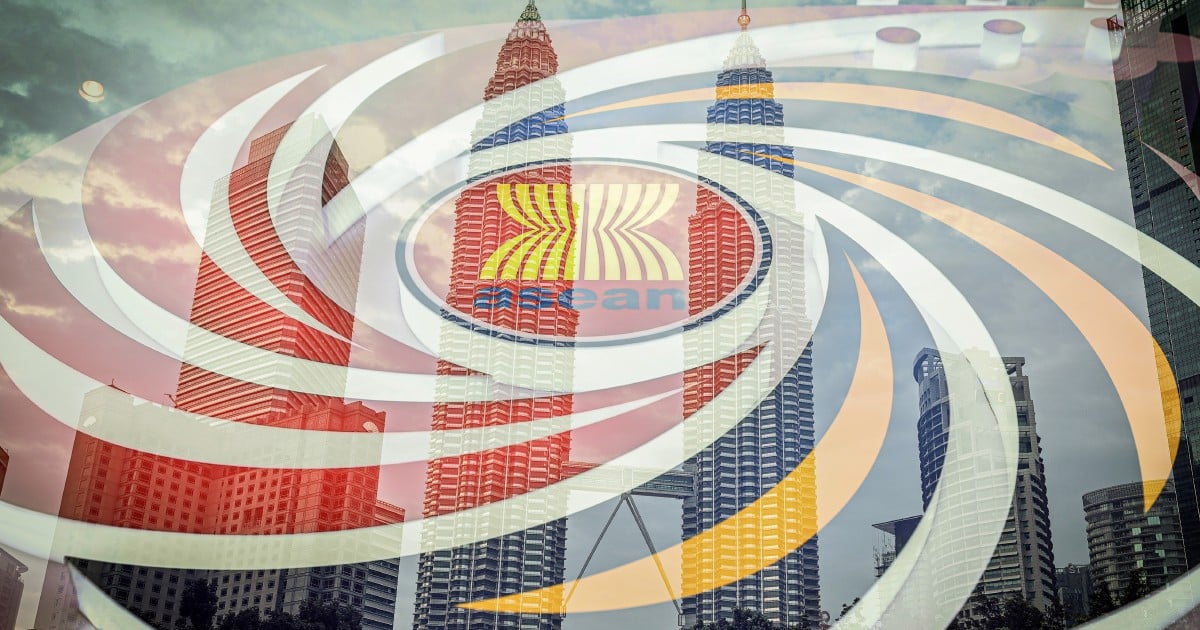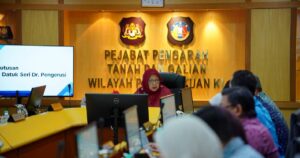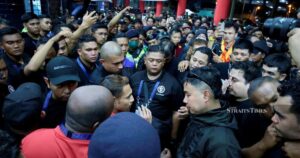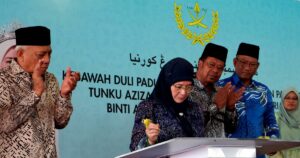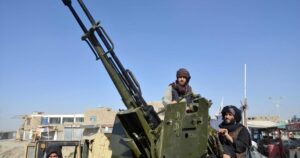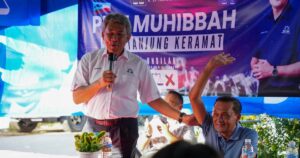IN an increasingly complex and turbulent global landscape, the 58th Asean Foreign Ministers’ Meeting (AMM-58), to be held from 8 to 11 July 2025 in Kuala Lumpur, is far more than another diplomatic gathering.
It marks a defining moment in Malaysia’s regional leadership, showcasing its role as a key architect in redefining Asean’s strategic narrative—one that is united, resilient and uncompromisingly responsive to global challenges.
As the world grapples with intensifying power rivalries, the lingering war in Ukraine and the emergence of alternative power coalitions such as BRICS, Asean remains a crucial geopolitical and geoeconomic bloc that cannot be ignored.
Asean’s principled commitment to consensus, moderation and neutrality allows it to act as a credible and trusted middle power, bridging divides between the Global North and South with unmatched consistency.
Home to more than 680 million people and representing a combined economy of over USD 3.6 trillion, Asean is no longer just a complementary actor to global superpowers.
It is now a key influencer in Indo-Pacific affairs. Under Malaysia’s 2025 Asean Chairmanship, the bloc has found renewed purpose and momentum, with AMM-58 as the centerpiece of its strategic recalibration.
Malaysia’s chairmanship: Steering Asean forward
Serving as Asean Chair for the fifth time, Malaysia seizes the opportunity to lead with substance, conviction and strategic clarity. Hosting AMM-58 in Kuala Lumpur, the country will bring together over 35 foreign ministers and senior representatives from major powers, including the United States, China, Russia, the European Union, the United Kingdom, Australia, South Korea, Japan and the Gulf Cooperation Council (GCC).
Their presence reflects global confidence in Malaysia’s ability to guide Asean through a period of complex diplomacy.
Preceding AMM-58, Malaysia had already hosted the preparatory Asean Foreign Ministers’ Meeting on 25 May 2025. That session laid the foundation for subsequent regional summits and produced some very tangible and significant outcomes:
(1) The adoption of the roadmap for Timor-Leste’s full Asean membership;
(2) A Malaysian-led review of the Five-Point Consensus on Myanmar;
(3) The acceptance of the Draft Addendum to the Southeast Asia Nuclear Weapon-Free Zone Treaty (SEANWFZ);
(4) Renewed commitment to the Treaty of Amity and Cooperation (TAC);
(5) Early discussions on Asean Community Vision 2045 and Asean’s strategic autonomy.
A full-fledged agenda with strategic focus
AMM-58 will feature an ambitious and tightly coordinated program such as:
(1) 9 July: Official Opening Ceremony by the Prime Minister of Malaysia, followed by the AMM Plenary, Retreat Session and the TAC Signing Ceremony;
(2) 10–11 July: Asean Post-Ministerial Conferences with Dialogue Partners such as the US, China, EU, Japan, UK, South Korea and India;
(3) 11 July: The 32nd Asean Regional Forum (ARF) and Conference on Cooperation among East Asian Countries for Palestinian Development (CEAPAD) IV Ministerial Meeting on Palestinian Development.
Additionally, key trilateral meetings involving Malaysia, Brazil, Norway, Turkiye, Switzerland, and the Asean Secretariat will also be held, cementing Kuala Lumpur’s status as a regional diplomatic hub and a driver of multi-vector cooperation.
Intra-Asean challenges: A priority for Malaysia
A hallmark of Malaysia’s leadership at AMM-58 is its strong focus on intra-Asean issues. These will most likely include regional security, particularly in Myanmar; weak intra-Asean trade, which remains significantly lower than external trade; hence the need to intensify economic cooperation within Asean—especially in partnership with the GCC—to reduce overdependence on external trade networks; and political cohesion in navigating global crises.
Malaysia’s leadership on Myanmar also drew global recognition. Prime Minister Datuk Seri Anwar Ibrahim’s separate dialogues with Myanmar’s State Administration Council and the National Unity Government marked a bold step toward inclusive political engagement. The appointment of a Permanent Asean Special Envoy to Myanmar to ensure consistency in peace efforts is also a move in the right direction.
Asean under Malaysian Chairmanship also reiterated its strong commitment to Asean Centrality, the Zone of Peace, Freedom and Neutrality (ZOPFAN) and SEANWFZ. These frameworks are increasingly relevant amid rising nuclear threats and power polarization. Malaysia’s active diplomacy positioned it not merely as a neutral facilitator but as a strategic narrator with a clear and uncompromising vision for Asean’s future.
Malaysia as the heartbeat of regional diplomacy
AMM-58 is a resounding affirmation of Malaysia’s diplomatic maturity and regional stewardship. Carrying the theme of “Inclusion and Sustainability,” Malaysia redefines Asean’s place in the world—not just as a bloc of consensus, but as a force of action. In shaping a bold and principled narrative for Asean, Malaysia has proven it can be more than a voice—but it can be the executor of collective aspirations.
Amid global fragmentation, the anticipated success of AMM-58 stands as testament to Malaysia’s emergence as the true heartbeat of Southeast Asian diplomacy and the architect of a more strategic, cohesive and respected Asean.
The writer is a senior lecturer at the Faculty of Administrative Sciences and Policy Studies, Universiti Teknologi MARA, Merbok, Kedah
© New Straits Times Press (M) Bhd
